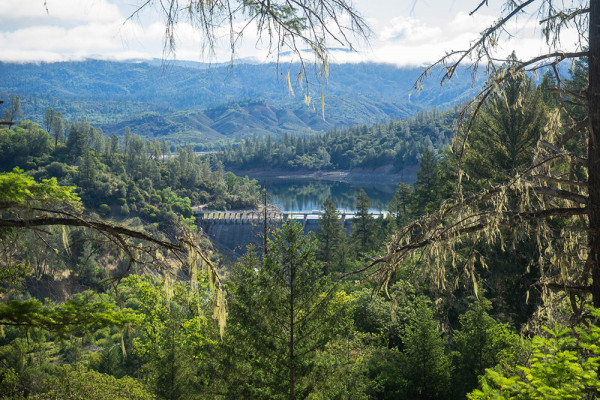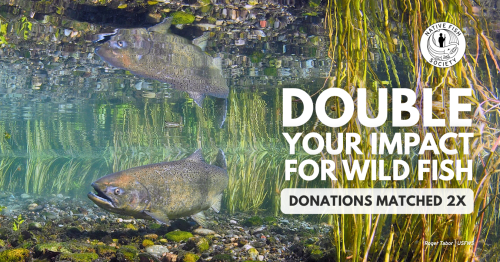The Potter Valley Project on the Upper Mainstem Eel River in Northwestern California is up for re-licensing. The project consists of two dams, Cape Horn and Scott. Scott has been blocking migrating salmonids access to over 200 miles of spawning habitat since 1922. Native Fish Society began working in 2015 to demonstrate the considerable amount of cold water habitat that exists above the dam. NFS has also supported steelhead genetics research that found evidence of a historic run of summer steelhead above the dam and that the level of genetic diversity in the resident trout population was comparable to other parts of the watershed.
In addition to the underwhelming 9.4 megawatt capacity of the hydroelectric facilities, the project stores and diverts water from the Eel River watershed south to the Russian River. This diversion provides water for the agricultural (primarily wine growing) and residential needs of Lake, Mendocino, Sonoma and Northern Marin Counties. The project’s current owners, Pacific Gas and Electric do not want to re-license the project. In 2019 a Notice of Intent (NOI) to take over the project was submitted to FERC by the Two Basin Solution Partnership. The Partnership consists of CalTrout, Sonoma County Water Agency, Mendocino Inland Water and Power Commission, the Round Valley Indian Tribes and the County of Humboldt.
On May 14, 2020 the Partnership submitted a Feasibility Study Report to FERC to summarize their plan to take over the project. The proposal includes removal of Scott Dam, infrastructure upgrade at Cape Horn Dam and fish ladder, continued power generation, a wintertime diversion to the Russian River to be stored in Lake Mendocino and an uphill pipeline to get stored water to users in Potter Valley, where the current year round diversion flows through. We cannot overstate the significance of these groups coming together and agreeing that removal of Scott Dam is the only option, moving forward. However, we see a few potential issues that are not adequately addressed in the Feasibility Study Report, the primary ones being the removal of Cape Horn Dam to provide reliable fish passage and who is going to pay for all of this work to be done? It seems like it should fall on those that have and will benefit from the project, namely Pacific Gas and Electric and users of the water diversion.
The deadline for public comment is June 29th.
HOW TO SUBMIT A COMMENT
1. Click on this link to register with FERC https://ferconline.ferc.gov/QuickComment.aspx
2. Once you've filled out your personal information you will receive an email from FERC.
3. Follow the link to this form on the FERC website:

4. Enter docket number "P-77-285" and hit search to find the NOI and PAD Pacific Gas & Electric Company
5. Then hit the blue plus (+) button on the right side of the form to choose this docket.
6. Write your own comment or use our sample, available here and hit enter below to submit.
Re: FERC Project No. P-77-285; Feasibility Study Report for the Potter Valley Project
Dear FERC staff,
I appreciate the opportunity to comment on the Feasibility Study Report for the Potter Valley Project being proposed by the Two Basin Partnership. I am pleased to see the proposed plan suggests removal of Scott Dam. Scott Dam has blocked anadromous fish from hundreds of miles of spawning and rearing habitat for nearly a century. I believe dams are one of the primary reasons for the decline of native fish throughout California and the world.
In general the plan sounds encouraging, as it proposes to remove the dam while maintaining water diversions and power generation. However, it neglects to propose the removal of Cape Horn Dam to secure reliable volitional fish passage and who is going to pay the significant costs for removing Scott Dam and all the other necessary structural improvements and new infrastructure for diversions. I think these costs should be incurred by PG&E and users who will and have benefitted from the water diversion.
Sincerely,
[your name]
Read the full Feasibility Study Report here
https://www.twobasinsolution.org/wp/wp-content/uploads/Feasibility-Study-05-13-2020.pdf

